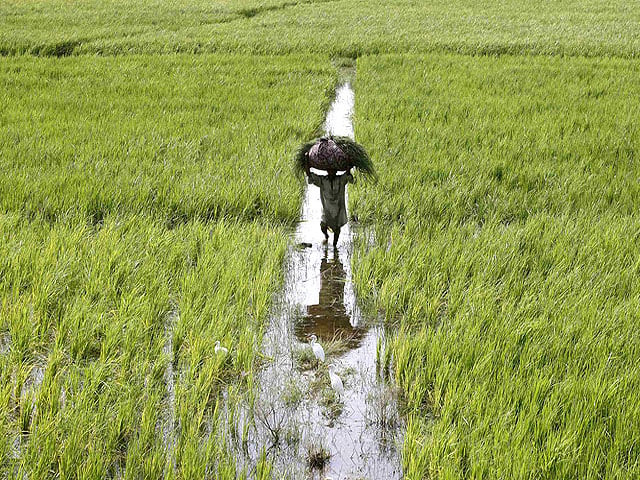Experts back soilless crop growing technique
In hydroponics, crops can be produced in any season with less input, output

Agricultural experts have underscored the importance of promoting hydroponics, a soilless technique, which can produce any crop in any season with less input and more return in comparison with conventional practices. Deploying the hydroponics technique-cum-system can ensure better food security while meeting rising demand from the local population. Growing food in the soilless system is termed a better strategy because it leverages less water than conventional agriculture.
This is an important crop growing method in glasshouses and greenhouses abroad. This can also be adopted in the urban areas of Pakistan aimed at scaling up crop yields. Farmers can grow plants without soil while using buckets or pipes. The main source in this modus operandi is water. Various nutrients are added to water while farmers have to maintain the temperature, humidity and light intensity for growing crops under controlled conditions.
Sindh Agriculture University (SAU)’s Office of Research, Innovation and Commercialisation (ORIC) Director Professor Dr Tanveer Fatima Miano said this technique is not popular in the country. Hydroponics technique requires more and more awareness among farmers who will be trained to adopt it, otherwise it is not generally being promoted. The farming community should be encouraged, guided and helped so that they can earn more through it, she said.
Hydroponics technique does not require ample water as farmers are using 15-centimetre pipes compared to buckets in the past. Water is being reutilised instead of being changed as excess water is drained to underground water tanks for storage, she elaborated. In the initial stage, farmers should opt for horticulture and floriculture by growing tomatoes, spinach, lettuce, cucumber, flowers and other such crops.
She said, “We can get winter crops in the summer and summer crops in the winter. For example, in November and December, there is usually a shortage of tomatoes and cucumbers as these are summer crops. Prices of these crops are higher in the winter season. We can grow these crops through hydroponics.
“There is no negative impact on human or animal health and environment. They are safe and healthy crops because of less consumption of fertiliser and no use of pesticides because there are controlled conditions and no pest attacks.” There are two types of hydroponics. In outdoor hydroponics, light intensity system, air conditioners and other such equipment are not installed. Secondly, controlled environmental conditions are ensured like shade or other structure where 72% to 75% humidity is maintained with other equipment because more humidity causes more pathogens.
For hydroponics, prepared nutrients are available in the market and they can dissolve in water and applied successfully. This innovative method bristles with many advantages including less input, more output, less amount of fertiliser and no pesticides.
Natural calamities such as floods, torrential rains, heat waves, frequent fluctuations in humidity and others take a heavy toll on plants. Farmers suffer big losses because of climate change, excessive use of pesticides and fertilisers, resulting in the presence of toxic material in environment and soil as well as affecting long-term natural ecosystem, human and animal health.
In hydroponics, peasants can grow crops in controlled conditions and they do not require open fields. This technique can benefit commercial farmers because the farming community is facing challenges of salinity, water-logging and climate change.
If commercial farmers grow crops through hydroponics, they will get more benefits. After winter, farmers set up a mid-nursery as high temperatures of May and June affect the nursery and if the nursery fails, farmers are unable to get seedlings for fields. This issue can be resolved through hydroponics as crops will be available in every season. Hydroponics can save expenses while under conventional methods, farmers have to apply more and more fertiliser to get higher returns and avert pesticide attacks on standing crops.
Fertilisers are not only expensive but they also pollute the environment and damage the soil and roots of plants. In hydroponics, overall input expenses are less than that of output as there is a balanced ratio of fertiliser while pesticides are not used due to controlled conditions.



















COMMENTS
Comments are moderated and generally will be posted if they are on-topic and not abusive.
For more information, please see our Comments FAQ